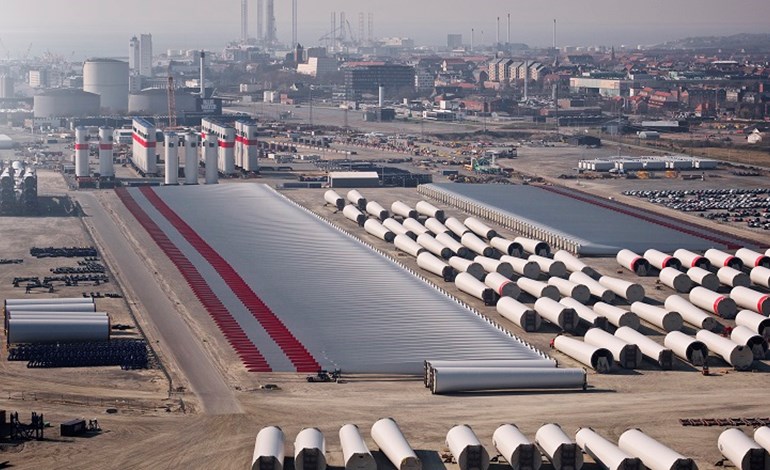Ports can play a “pivotal role” in supporting decarbonisation by becoming renewable energy hubs, a new study by DNV GL has found.
‘Ports: gateways to Europe – 10 Transitions to turn ports into decarbonization hubs’ found that growth in offshore wind and the enforcements needed to connect these facilities to the grid will lead to an “advantageous position” for large industrial ports as hubs for renewable energy generation.
By 2050, the total electricity generating capacity for industrial ports could increase more than tenfold and renewables could account for at least 70% of their total electricity generation, compared to 5% today, said DNV GL.
The report, produced with input from the Eurelectric association, found that despite industrial production increasing almost 60% and cargo throughput growing 30% by 2050, energy efficiency measures and electrification could more than compensate for the growth in port activities.
Additionally, the carbon intensity for port side energy use will almost halve.
DNV GL advised that 10 “green transitions” will need to be made in and around ports to decarbonise them.
They include electrification of port-related activities, fuel switch for maritime transport, integration of offshore wind, hydrogen as a feedstock and energy vector, carbon capture and storage and new regulations.
The findings show that without these green transitions, ports’ energy use and emissions will increase significantly.
Transport accounts for one-third of the overall EU CO2 emissions, with water transport making up 14%.
As wider electrification of cars and road transport occurs, the relative contribution of water transport will “increase significantly” if emissions from water navigation are not tackled in time, said DNV GL.
Eurelectric secretary general Kristian Ruby said: “The energy transition holds a huge potential for European ports. Offshore renewable energy will be a major driver of business and employment.
“And by electrifying operations, ports can drastically reduce both air pollution and carbon emissions.”
DNV GL chief executive Ditlev Engel added: “Governments need to incentivise port authorities and energy players to facilitate the development of energy infrastructure across multiple energy carriers in ports.
“First movers and those who manage to cooperate should be rewarded by relevant government policies. Fast action is needed to secure a more sustainable future.”

